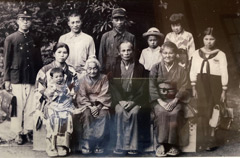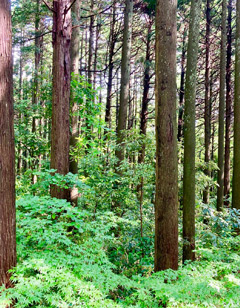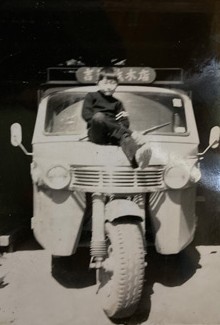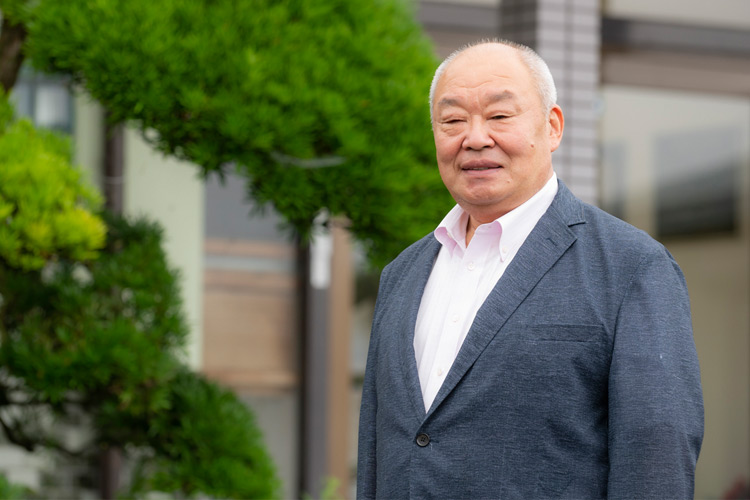Company Profile
-
- Company Name
- Yoshizawa Construction Co., Ltd.
-
- President
- Yoshizawa Naoto
-
- Location
- 2085-1 Orihara, Yorii-machi, Osato-gun, Saitama 369-1234
Tel. 048-581-3050
Fax. 048-581-3053
-
- Founded on
- February 1954
-
- Capital
- JPY 30 Million
-
- Main Business
- ・General construction business
(Construction and supervision of construction work, civil engineering work, demolition work, paving work, etc. )
・Real estate transaction business
・Any business incidental to the above
-
- Permit
- Licensed by Saitama Prefectural Governor(TOKU-29)No. 5728
(Construction work, Civil engineering work, Demolition work)
Licensed by Saitama Prefectural Governor(PAN-29)No. 5728
(Pavement industry, Scaffolding and civil engineering, Carpentry, Plumbing)
Industrial waste collection and transportation license No. 01100179080
-
- Registration
- Registered as a first-class architect office:Saitama prefectural governor registration(11)No. 363
-
- License
- Real estate transaction business license:Saitama prefectural governor registration(1)No. 24865
-
- Qualification holder
- First-class architect 2persons
Second-class architect 1person
First-class construction management engineer 2persons
Second-class construction management engineer 1person
First-class civil engineering construction management engineer 4persons
Second-class civil engineering construction management engineer 2persons
Registered second-class construction business accountant 1person
Real Estate Notary 1person
-
- Bank
- Saitama Resona Bank, Ltd. Yorii Branch
The Musashino Bank, Ltd. Yorii Branch
The Gunma Bank, Ltd. Fukaya Branch
The Saitamaken Shinkin Bank. Yorii Branch
Kumagaya shouko shinyoukumiai Yorii Branch
Access
History
-
- 1954
- Founder Yoshizawa Kenji establishes the company in Yorii, Saitama
-
- 1967
- Reorganized as Yoshizawa lumber, Ltd
-
- 1973
- Renamed Yoshizawa Construction Co., Ltd
-
- 1973
- Increased capital to 10 million yen
-
- 1976
- Increased capital to 20 million yen
-
- 1979
- Increased capital to 30 million yen
-
- 2002
- Yoshizawa Kenji Appointed Chairman
Yoshizawa Naoto Appointed President and Director
-
- 2022
- Established Real Estate Division
-
- 2024
- 70th Anniversary of the company foundation
Story
Episode1Founder, Yoshizawa Kenji
In 1927, our founder Kenji Yoshizawa was born to a couple of local farmers in Orihara Village (now Yorii Town) in the northern part of Saitama Prefecture. He was the fourth son out of nine children.
When Kenji was three years old, he contracted measles. At that time, it was not common for children in this area to see a doctor even if they had measles, so Kenji was trying to recover from the disease only at home.
Unfortunately, his condition worsened. Eventually his life was saved, but Kenji was exposed to a high fever and lost most of his sight.
He could vaguely see light, moving objects, and silhouettes of people, but he could not distinguish small details. When he entered elementary school, he always sat in the front seat because he could not see the letters on the blackboard from the back seat.
However, by the time Kenji became a fourth grader he was yelled at by his new teacher, "Yoshizawa, why are you sitting in the front seat? Go to the back!" Kenji got angry, quit school and swore that he would never return again. Indeed, Kenji never resumed official schooling, showing at an early age that he had a strong personality. He would never pull back once he had made a decision.
 The Yoshizawa family around 1940. Third from the left in the back row is Kenji Yoshizawa.
The Yoshizawa family around 1940. Third from the left in the back row is Kenji Yoshizawa.
Episode2Returning
Kenji, who had reached the age at which any other child would graduate from elementary school, had decided to live and work at a chiropractic clinic run by a blind masseur in Tokyo. There, he wished to learn a job he could do with his own hands. Pretty much the old-fashioned apprenticeship way.
However, in addition to the masseur training, helping out with the daily life at the clinic was a tough job for Kenji. Not being able to write by himself, one day Kenji asked a senior apprentice to help him write a letter. It was addressed to his older brother, Yayoi:
- Brother Yayoi, I don't like this life anymore. I'll do whatever chores I am commanded if I am allowed to return home. So please let me come back.
Upon reading this, Yayoi rode his bicycle to pick up Kenji. The distance was about 100km. Considering the road conditions and the performance of bicycles at that time, it seems that it took them about 8 hours to run just one way.
After returning home, grateful Kenji continued to work without complaining, no matter how hard farming or household work was.
Episode3The days as Mountain Forester
At that time, in addition to farming, the Yoshizawa family also worked as a Mountain Forester undertaking the purchase and logging of forests. Kenji worked hard to learn the work of a forester under his eldest brother Fukuyoshi.
They bought trees still standing at vast forests, and the time available to judge the value of each tree was limited. Kenji, who had poor eyesight, was unable to judge the quality of a tree by its appearance. Kenji then developed the special ability to judge the value of the forest based on the feel of his hands, the sound of tapping, the sound of leaves rustling in the wind, and the atmosphere of the place.
In later years, Kenji told his son (now President of Yoshizawa Construction), “ A good tree has good leaves. So, the sound when the leaves sway in the wind in a good mountain forest is completely different from the sound of a mountain forest that is not.”

Episode4The fun of business
In addition to his work as a forester, Kenji's job was to collect bushes and firewood and sell them to roof tile factories in neighboring towns.
One day, Kenji was going around the many roof tile factories along the route indicated by his eldest brother, Fukuyoshi, selling at exactly the price he was told to. By the time he visited the last one, there was only a little firewood left. Seeing this, the wife of the roof tile maker said, "Oh no, is this the only one for today? I'm at a loss. Next time, please be the first to come to my house." It was at that moment when Kenji, only 14-15 years old, first realized the principle of the market economy called "supply and demand".
While men of the same generation who had received a solid education before and during the war were concerned about military conscription (and were in fact conscripted), Kenji, who escaped conscription for physical reasons, unexpectedly learned the fun of business. First hand, with his own experience.
In early 1954, Kenji got married. At the same time, he decided to leave his eldest brother, Fukuyoshi, and become independent. This year marks the founding of Yoshizawa Construction Industry. At the end of that year, his first son, Naoto (currently Yoshizawa Construction Co., Ltd. CEO) was born.
 Kenji's wife Sumiko holding her eldest son, Naoto (in 1955)
Kenji's wife Sumiko holding her eldest son, Naoto (in 1955)
Episode5The spirit of 'faithfulness'
After becoming independent, Kenji switched from working as a forester to becoming a lumber dealer. Then, in 1973 based on the know-how acquired while doing business with construction companies, we switched to the construction business.
This was the period of high economic growth in Japan. He began doing a lot of civil engineering work and building wooden houses.
As years passed and the company successfully grew, Kenji gradually lost his eyesight. Then, in his late 40s, Kenji became completely blind. Even so, he used his walking cane and came every day to visit his office, which was just a few minutes' walk from his home, and sat in the president's seat.
Ever since the times Kenji was a forester, for him, the most important thing in doing business was Sincerity. And even after he became a constructor, his spirit remained the same.
The management of Yoshizawa Construction Industry, founded by Kenji, was carried over to his eldest son, Naoto, and so continues to this day. Going forward, we will continuously adhere to our company motto, “Sincerity,” and always look to the future as we further develop our business.
 During his time as a lumberman, his third son Yasuhiro sat on an auto tricycle (in 1967)
During his time as a lumberman, his third son Yasuhiro sat on an auto tricycle (in 1967)
 Civil engineering workers (circa 1970)
Civil engineering workers (circa 1970)


